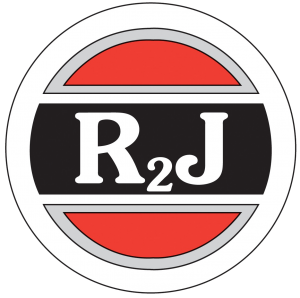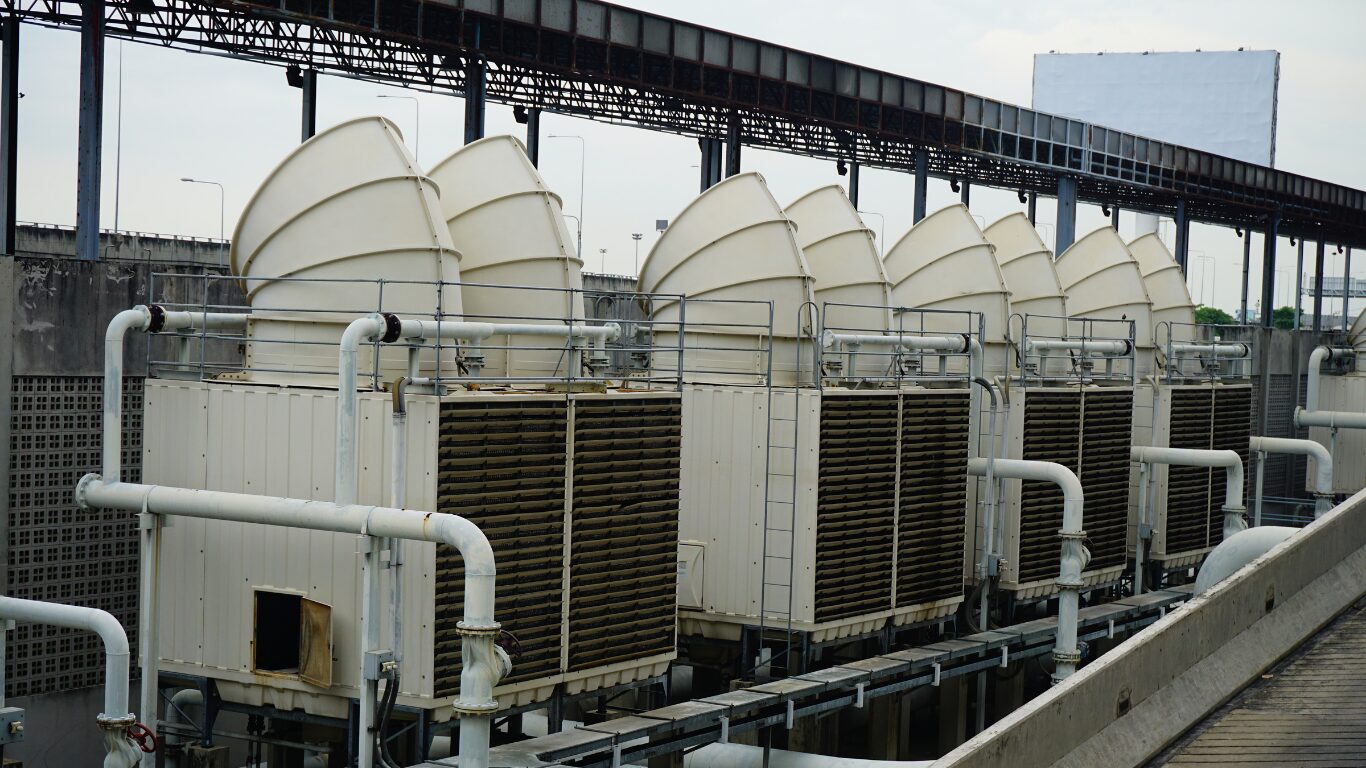Cooling Tower Maintenance Checklist for Peak Efficiency
Oct 29, 2024Cooling towers do some of the hardest work in your facility. They remove heat from HVAC systems and industrial equipment, helping everything operate within safe temperatures. But without proper cooling tower maintenance, even the best-designed systems lose efficiency over time. Scale builds up, bacteria multiply, and components start working harder than they should. The result is higher operational costs and a shorter equipment lifespan.
Regular maintenance keeps your cooling tower clean, balanced, and performing as designed. It is more than just a routine inspection; it is about understanding how water, air, and mechanical components interact under real-world conditions. Teams that stay proactive can spot issues early, before small inefficiencies turn into costly breakdowns.
In this guide, we will walk through the fundamentals of cooling tower maintenance, from understanding critical components to setting up a practical maintenance checklist. Whether you manage a single tower or an entire system, the goal is the same: reliable, efficient, and uninterrupted operation.
Understanding Cooling Tower Components
To maintain your cooling tower effectively, it is important to understand its main components and how they work together. The system relies on mechanical parts and water flow to remove heat efficiently from your facility. Key components include:
- Fan assemblies, fan blades, and fan shafts – move air through the tower and ensure smooth operation.
- Fan hubs and fan motors – require inspection to prevent vibration or mechanical failure.
- Tower fill – spreads water to maximize air contact for heat removal. Can become clogged or coated with scale over time.
- Spray nozzles – distribute water evenly across the fill.
- Suction screens – prevent debris from entering the system.
- Drift eliminators – capture water droplets and minimize losses, keeping operations safe and compliant.
Understanding how each part contributes to cooling tower performance makes maintenance more effective. Routine visual inspections and checks of these components help teams catch issues early, maintain peak efficiency, and extend the lifespan of the system.
The Importance of Routine and Preventative Maintenance
Keeping your cooling tower in top condition requires both routine maintenance and preventative maintenance. These practices ensure your system runs efficiently, reduces operational costs, and prevents costly breakdowns. Teams that follow a structured maintenance schedule can spot small issues before they become major problems, protecting both equipment and facility operations.
Key benefits of routine and preventative maintenance include:
- Early detection of mechanical issues such as fan motor wear or excessive vibration.
- Reduced risk of bacterial growth including Legionella bacteria, which can cause health hazards.
- Prevention of scale buildup and corrosion in the tower fill and piping.
- Consistent water quality through monitoring and adjustments to the water treatment system.
- Extended equipment life by keeping fan assemblies, drift eliminators, and other components in good condition.
Maintenance schedules typically vary depending on system size and usage, but teams often perform checks on a weekly, monthly, and yearly basis. Consistent tower care also supports long-term water savings and sustainability goals.
To see how facilities reduce waste while maintaining efficiency, visit our post on Sustainable Water Management.
Common Cooling Tower Issues to Watch For
Even well-maintained cooling towers can develop problems over time. Knowing what to watch for helps teams address issues early and avoid reduced performance or costly breakdowns. Operators often catch early signs by monitoring both mechanical components and water conditions.
Frequent issues in cooling towers include:
- Scale buildup and clogged fill – minerals accumulate on the tower fill, reducing heat transfer efficiency.
- Corrosion – affects metal components, including fan shafts, fan hubs, and tower structure.
- Excessive vibration or unusual noises – often signals fan motor wear, misaligned fan blades, or other mechanical problems.
- Water quality problems – stagnant water or inadequate treatment can lead to bacterial growth and potential Legionnaires’ disease outbreaks.
- Malfunctioning spray nozzles or suction screens – uneven water distribution reduces cooling efficiency.
- Temperature issues – towers may fail to maintain proper water temperature, affecting HVAC and industrial processes.
Teams should conduct regular visual inspections and routine checks to identify these issues early. Addressing minor problems promptly keeps your cooling tower running efficiently and ensures uninterrupted operations across the entire system.
Cooling Tower Maintenance Checklist
A practical maintenance checklist helps facility managers keep their cooling towers in optimal condition. By following a structured routine, teams can prevent issues like scale buildup, corrosion, and bacterial growth while maintaining peak efficiency.
Essential maintenance tasks include:
- Check water level and quality – ensure proper water flow and treatment. Monitor for stagnation and chemical balance.
- Inspect fan assemblies – examine fan blades, fan hubs, and fan shafts for wear or vibration.
- Clean tower fill and spray nozzles – remove debris and prevent clogged fill to maintain efficient heat transfer.
- Examine drift eliminators and suction screens – ensure proper water distribution and avoid debris entry.
- Visual inspection of mechanical components – check for corrosion, leaks, or loose connections.
- Monitor water temperature and evaporation rates – ensure the system removes heat effectively.
- Adjust suction screens and verify pump operation – maintain consistent water circulation across the system.
- Document inspections and repairs – track trends and identify recurring issues early.
For more details on what to look for during inspection, see our guide on Cooling Tower Inspection.
Following this checklist on a weekly, monthly, and yearly basis keeps your tower operating efficiently and reduces operational costs over time.
The Role of Water Treatment in Maintenance
A proper water treatment system is essential for keeping your cooling tower safe and efficient. Untreated or poorly treated water can lead to bacterial growth, including Legionella bacteria, which can cause serious health hazards such as Legionnaires’ disease outbreaks. Water treatment also prevents scale formation, corrosion, and other issues that reduce operational efficiency.
Key water treatment tasks include:
- Monitoring water chemistry – check pH, hardness, and chemical levels regularly.
- Disinfection – prevent bacteria from multiplying in stagnant water.
- Filtration – remove debris and suspended solids that could clog tower fill or spray nozzles.
- Scale and corrosion control – apply appropriate chemical treatments to protect metal components.
- Documentation – track water treatment adjustments and results to ensure consistency.
Proper water treatment keeps your tower running efficiently, reduces maintenance costs, and protects the health of building occupants. Teams that maintain a clean water system also improve heat removal, prolong equipment life, and avoid unexpected downtime.
To learn more about maintaining water quality, check out our guide on Cooling Tower Water Treatment.
Environmental and Operational Factors to Consider
Cooling tower performance is not just about maintenance tasks. Environmental conditions and operational settings play a major role in keeping your system efficient. Teams should monitor factors that can affect heat removal and water quality, adapting maintenance routines as needed.
Key factors to watch include:
- Outside air conditions – temperature, humidity, and debris can impact water evaporation and system efficiency.
- Water temperature – variations affect the tower’s ability to remove heat effectively.
- Type of draft system – natural draft, forced draft, or induced draft towers each require slightly different monitoring and care.
- Environmental exposure – dust, pollen, or airborne contaminants can accumulate in the tower fill and spray nozzles.
- Operational load changes – fluctuations in HVAC or industrial demand can stress the system and reveal weaknesses in mechanical components.
By understanding how these factors affect the tower, facility managers can schedule inspections and adjust maintenance routines proactively. This approach ensures peak efficiency, reduces unexpected downtime, and helps maintain safe, reliable operation.
Building a Reliable Tower Maintenance Program
Creating a structured tower maintenance program is key to keeping your system running efficiently and safely. Teams should treat maintenance as part of the daily operation, not just an occasional task. A reliable program combines routine checks, preventative measures, and clear documentation.
Steps to build an effective program include:
- Schedule inspections on a weekly, monthly, and yearly basis to monitor mechanical components, water quality, and system performance.
- Document all maintenance activities – tracking repairs, component replacements, and water treatment adjustments helps identify recurring issues.
- Train staff to recognize early warning signs, such as unusual vibration, temperature issues, or scale buildup.
- Integrate water treatment into the program to control bacterial growth, scale, and corrosion.
- Adjust routines based on operational conditions – environmental factors and load changes should guide the frequency and focus of inspections.
A proactive maintenance program keeps the entire system reliable, efficient, and safe for building occupants. It improves operational efficiency, extends equipment life, and helps reduce operational costs while minimizing unexpected downtime.
Expert Support for Cooling Tower Maintenance
Even with a solid maintenance program, some issues require specialized knowledge. Teams often encounter challenges with mechanical components, water treatment, or operational adjustments that can affect peak efficiency. Having access to expert guidance ensures problems are addressed correctly and quickly, reducing downtime and maintenance costs.
Running a cooling tower smoothly takes experience and insight. If your team wants practical advice on system inspections, troubleshooting, and optimizing routine maintenance schedules, our R2J specialists can guide you. Together, we can create a maintenance plan that keeps your system performing reliably, avoids unexpected downtime, and protects both your equipment and your building occupants.
Frequently Asked Questions (FAQs)
How often should cooling towers be inspected?
Inspections depend on system size and usage. Teams usually perform checks on a weekly, monthly, and yearly basis to monitor mechanical components, water quality, and operational efficiency.
What are the signs of reduced performance?
Look for excessive vibration, unusual noises from fan assemblies, temperature issues, clogged fill, or uneven water distribution. These often indicate scale buildup, corrosion, or other maintenance needs.
How does maintenance reduce operational costs?
Regular checks and preventative maintenance help avoid costly breakdowns, improve heat removal, and extend equipment life, reducing repair and energy expenses over time.
Why is water treatment important for cooling towers?
A proper water treatment system prevents bacterial growth, Legionella bacteria, scale formation, and corrosion. Maintaining clean water ensures safe operation and efficient cooling.
What safety risks are linked to poor maintenance?
Neglecting maintenance can lead to Legionnaires’ disease outbreaks, equipment failure, and unsafe water quality, which put occupants and operations at risk.


